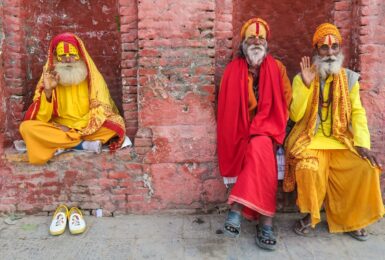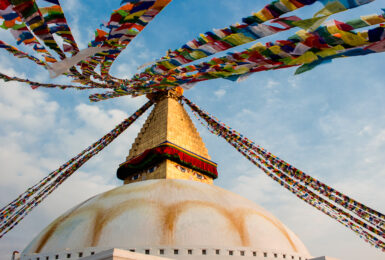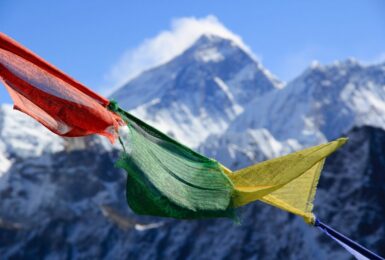It’s Saturday morning; my alarm goes off at 6am. Today, after my morning chores, I’m visiting the world-famous Swayambhunath Stupa Kathmandu. And even though I’ve been many times, I’m just as excited as the first visit. We call it Swayambhunath Stupa, but foreigners might know it better as ‘Monkey Temple’. It’s called that because monkeys have been residing here for centuries, and if you visit, chances are you’ll encounter some furry friends wandering around the corners of the stupa – some waiting to ambush your food! Top tip: don’t bring food with you, or keep it concealed in your bag.
I’m a writer and photographer, born and raised in Kathmandu. But I often feel like a tourist in my own city, there’s a certain magic here! Even better, I love visiting the UNESCO world heritage sites in Kathmandu Valley, including Boudhanath, Pashupatinath, and Swayambhunath (where I’m heading today). I’ve taken some of my favourite photos there and I love the aura of the sites.
Usually, people take the stone stairway (with 365 steps) to reach Swayambhunath Stupa, but you can also journey up the western side of the stupa. From up here, the endless views of Kathmandu valley are breathtaking. From the top of the hill, I look up to see where the whitewashed dome dominates the sky, and the Buddha’s eye gazing out across Kathmandu.

Image source:Ben Pauer / Unsplash
Once you climb the stairway, you’ll see the Lightning Bolt just in front of the stupa. This Lightning Bolt, also known as ‘Vajra’ is brass-plated and represents the symbol of the power of enlightenment. From that point, you should circumnavigate the stupa in a clockwise direction. I used to do it the wrong way (anti-clockwise) but realized it’s the wrong practice!
It’s so peaceful and magical up here. You’ll see the lower dome, embellished with chains of prayer wheels, while the top of stupa is decorated with fluttering prayer flags sending good wishes. Locals believe that the entire stupa is symbolic. The whitewashed dome is the earth, the pair of eyes are Buddha’s eyes, and the nose-like structure actually represents unity. The 13-tiered-gilded tower represents the 13 stages to Nirvana.
The five different colors on the prayer flags also mean different things. The blue color represents the sky, white signifies the air, red is fire, green is water, and yellow is earth. Each flag is printed with a different mantra to spread positive energy with the wind, and it’s also believed that prayer flags are never meant to touch the earth.
Up here, you can also see a few other religious monuments, sites and shrines such as the Swayambhunath Buddhist Museum and World Peace Pond, with its beautiful statue of a Buddha holding a cauldron. Visitors try to flip coins into the cauldron – if they make it, their wishes will come true! I’ve tried so many times and I try again today, hoping with everything I have but… no success! I hope you have better luck, if you visit the stupa! I wander around the stalls selling everything from incense and prayer flags to postcards and beautiful small stones inscribed with mantras.
Every time I visit the Swayambhunath Stupa Kathmandu, it completely mesmerizes me and today is no different. Maybe it’s the trance-inducing music, the fragrant smell of incense or the inescapable beauty that captivates my soul. If you’re a photographer or just love to travel, you must visit the stupa at least once. Or maybe twice! Trust me; it will leave you speechless. Namaste!




